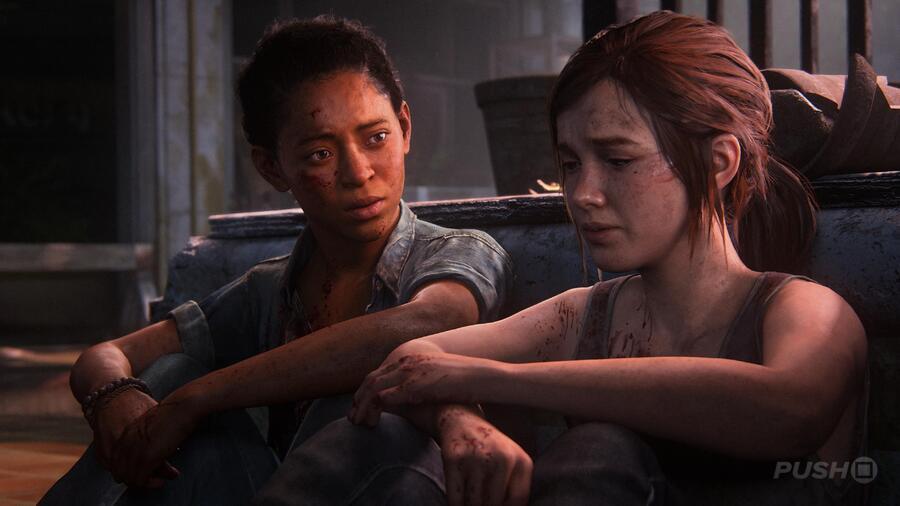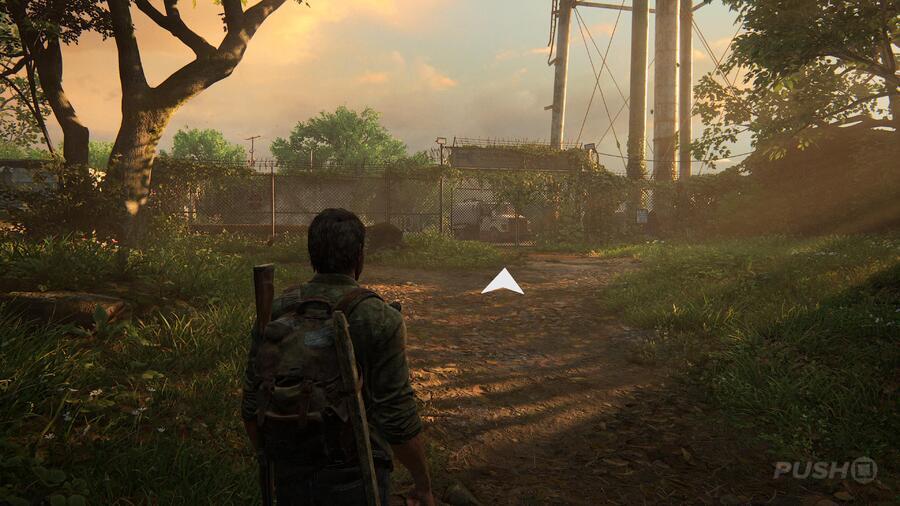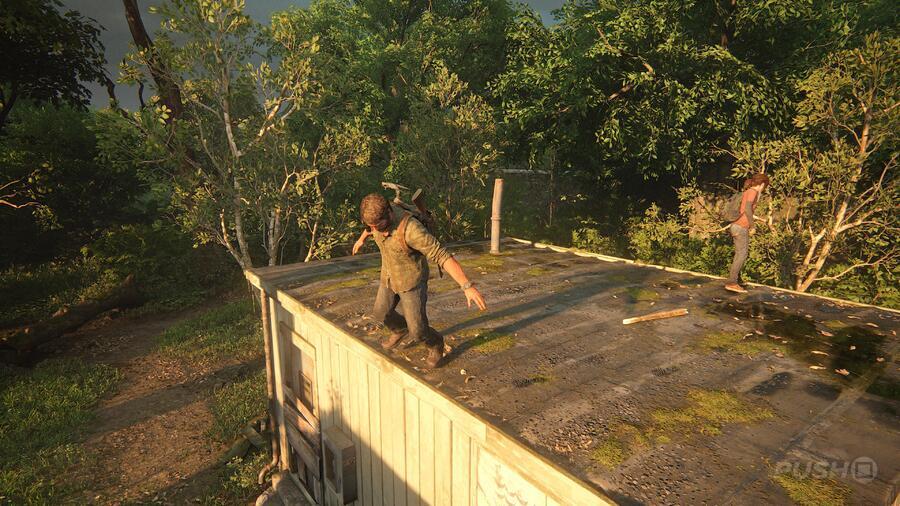[ad_1]

The very first thing you see upon booting up The Last of Us: Part I is accessibility options. Not a main menu, not a long introductory cutscene, but a list of settings designed to make the game more approachable for those who need it. Naughty Dog had already developed an extensive list of accessibility options for 2020’s The Last of Us: Part II, making it one of the most accessible titles for gamers with disabilities to date. With the remake of the 2013 original, though, the developer has gone above and beyond with an even more comprehensive set of settings. These options are allowing blind and deaf players to not just play the game, but finally finish it.
However, this wasn’t always going to be the case, as accessibility consultant Brandon Cole explains Naughty Dog was “just looking for parity” with The Last of Us: Part II when it took over the project. Cole helped the studio to implement features like navigational assist, aim assistance, and screen reader narration, and he along with other consultants pushed the development team to introduce even more settings. The support means accessibility is now a “major part” of Naughty Dog’s work cycle. “Honestly, it never stops with them. Even now, I know they want to do more. They want to make new features, and make existing ones even better.”
A recent patch addressed a series of bugs related to accessibility options already in the game, and many consider the suite of settings to be some of the best in gaming. Ben Bayliss, the editor-in-chief of accessibility website Can I Play That, thinks it’s one of the best examples in the AAA space. “There’s a lot of innovation here, especially with the audio-described cinematics and the DualSense feature that converts in-game dialogue into haptic vibrations. These have never been seen in a AAA game and I’m excited to see future titles from any studio look to The Last of Us: Part I and Part II and use them for inspiration.”

There’s a lot of innovation here, especially with the audio-described cinematics and the DualSense feature that converts in-game dialogue into haptic vibrations.
Steve Saylor, a popular content creator in the accessibility space, feels similarly to Ben, but he thinks the design decisions made in the original PS3 title still hold the game back from being fully accessible for all. “That’s not Naughty Dog’s fault and not to say Part I isn’t accessible. It’s to say that the original wasn’t designed with accessibility in mind like Part II was and some of those nine-year-old game design decisions sometimes make the game a little [more] clunky than intended.” Saylor argues the PS5 remake proves that if you consider accessibility options early on in development, then disabled gamers will have a “much more smoother and more comfortable experience”.
For blind players, learning about their surroundings in-game through audio descriptions and cues is vital for making meaningful progress. The Last of Us: Part I offers this through navigational and traversal assistance, pointing you in the right direction with unique prompts and callouts. For example, the Ledge Guard feature makes the PS5 DualSense controller vibrate when you’re next to a drop and holds either Joel or Ellie for much longer before they start to fall.
The screen reader toggle then has the game speak to you, explaining your current situation, any items you have, what gun you have equipped, and pointing out anything you could craft with the resources you’ve gathered. Then there’s an enhanced Listen Mode which provides both visual and audio cues to highlight nearby items, ammo, and health packs. While this feature has received a lot of praise, it could be improved upon.

SightlessKombat, the Accessible Gaming and Immersive Technologies Research Officer for the Royal National Institute of Blind People, would like the feature to be customisable, allowing you to select what the mechanic alerts you to — story progression, specific items, certain resources, or ammo, for example. Another issue Brandon Cole has is its limited range; you can only use it for up to a maximum of 30 metres. “This can sometimes result in well-hidden collectables being forever hidden to us simply because they aren’t near the golden path, or within scan range of any other items near it.”
The high contrast mode featured in The Last of Us: Part II is also part of the PS5 remake, which strips the game image down to easier-to-read colours that make it obvious who the enemies are and what objects you can interact with. It’s one option along with motor accessibility, zoom options, and audio descriptions that make The Last of Us: Part I a more accessible game for Steve Saylor. “They help me not have to actively focus on the game to try to see what’s going on.”
I’m now running through a New Game+ run thanks to the accessibility features allowing me to complete the game and actually experience the story.
Ben Bayliss of Can I Play That, meanwhile, is deaf and so has to rely on the accessibility options to communicate something to him on screen that would normally be delivered audibly. “Some levels use audio to draw attention, such as explosions, or the sound of the Infected. The trouble is, there are no captions for sound, which means I may not be aware of the sound until a character makes a comment about said sound.” Navigational assistance points Ben in the direction of the action, and the aforementioned enhanced Listen Mode also has its uses. “It’s just a nuisance to use consistently as it forces you into stealth mode — I’d much rather be able to tag enemies and see them with outlines that remain on-screen.”
The likes of haptic feedback and adaptive trigger support via the PS5 DualSense controller are more new features for The Last of Us, and they help disabled gamers to further immerse themselves in the post-apocalyptic world. “I especially enjoyed the haptic dialogue where the DualSense vibrates to the dialogue and changes intensity based on which character is speaking. It’s a ton of fun and definitely helps a lot as a blind player,” said Steve Saylor. The feature also struck a chord with Ben Bayliss: “I have never felt a connection to the characters in a game in the same way I was able to with this feature. Being able to feel the tone, bass, and cracks in the voice of a dialogue’s delivery was incredible.”
Although, Bayliss has some reservations about the DualSense pad’s features being used for accessibility specifically. “There’s certainly a focus on immersion, and thankfully there are a number of sliders to adjust various audio elements so some audio sources aren’t too overpowering. However, for the accessibility haptics, I rarely felt the directionality was intense enough for me to fully understand my surroundings.” You can read more of his thoughts on this subject in a recent Eurogamer piece.
Despite some features that could be improved, though, our interviewees agreed it’s an incredible feeling to finally play a game they weren’t able to before. SightlessKombat wasn’t able to play The Last of Us in 2013 (the same goes for The Last of Us Remastered one year later), but he says it’s “fantastic” to finally see what all the fuss is about. “The fact that I needed minimal sighted assistance to do so is even better, though of course having no assistance at all would be ideal. It’s definitely worth the wait though to finally appreciate the same experience that so many have been able to go through for nearly a decade.”
It’s definitely worth the wait to finally appreciate the same experience that so many have been able to go through for nearly a decade.
Ben Bayliss shares a similar story; he was able to experience “a small portion of the early game on the PS3 but the barriers present had me not willing to invest any more time into it. Specifically, subtitles were not legible so I couldn’t follow the story, and the focus on cinematic immersion had me unsure where to go for progression.” In the PS5 remake, subtitles can be made much bigger — thus easier to read — and a directional arrow attached to the text tells you where the speaker is in the area.
Our interviewees finally felt a sense of inclusion being able to play The Last of Us: Part I; no longer are they unable to play the game because of a disability. Brandon Cole describes it as “a dream come true” while Steve Saylor is happy his blind friends can finally enjoy the game. “I know for myself going back to it with all the accessibility now, it has made me fall in love with the game even more than when I did a few years ago,” he explains.
Ben Bayliss adds: “Being able to play The Last of Us: Part I without as many barriers after nearly a decade of wanting to experience it feels great! Accessibility has enabled me to feel included in the studio’s target audience, and I can finally understand why the game was so critically acclaimed for the story alone.”
The Last of Us: Part I is gaming accessibility at some of its best, and it marks a movement over the past 10 or so years that has allowed the hobby to be enjoyed by more people. “Accessibility is essentially always a part of the gaming conversation now, which I absolutely love,” said Brandon Cole. “It makes me proud to be in the position I’m in, where I can do my part to further those goals, and push that snowball down the hill.”

SightlessKombat describes it as an “amazing feeling” when he doesn’t have to rely on another person every five minutes to explain something he can’t see. “That feeling of agency cannot be understated and I hope more developers embrace accessibility as a core part of development, getting consultants in from all over the world to create as accessible a game as possible both at launch and all the way through the game’s life cycle.” Steve Saylor is also happy with the progress made so far in the accessibility space, but he thinks there’s much more to come. “It’s really the end of the beginning of our journey with accessibility. [There’s a] lot of work still left to do. I can’t wait for the next few years where in a way I don’t have to always mention The Last of Us: Part II as much as a pinnacle of accessibility because we’ll have a ton more games that match or even exceed it in regards to accessibility.”
Other studios dabble in accessibility, but at least where blind accessibility is concerned, [they] don’t quite do enough to actually make their games playable to us.
We’re not at a point where accessibility in gaming is flawless, warns Ben Bayliss. “A common misconception is that if games have a great number of features, it means they are accessible to many. However, it’s all about implementation and ensuring features are being built into the design early, tested, and serving their purpose. A lot of the time, the number of features alone is celebrated as an achievement — to some people that could give the impression that accessibility is a checklist where features are slapped on and ticked off.”
As such, Bayliss wishes to see full-time accessibility teams working on future titles and have disabled gamers be included in the marketing cycle where the options and settings that matter to them are revealed before a game’s release. Santa Monica Studio has already done this for God of War Ragnarok, and it’s made Brandon Cole “very, very excited” for the game after being unable to play God of War back in 2018. “The accessibility features introduced in God of War 2018 are not focused on the totally blind at all, so were not nearly enough to allow me to play that game. That does not diminish my excitement for the new one, however.”
Speaking in more general terms, Cole says more developers still need to be convinced accessibility options open up their worlds to more players. “Other studios dabble in accessibility, but at least where blind accessibility is concerned, [they] don’t quite do enough to actually make their games playable to us. So many games have menu narration now, but it’s typically incomplete, only covering a few menus, usually on the first couple [of] levels or menus. These things need to change.”

Steve Saylor wants to see Sony create its own version of the Xbox Adaptive Controller, which allows gamers with limited mobility to plug almost any device into it and use it as a controller for use in Xbox games. Saylor is encouraged by the company’s decision to release some of its titles on PC since his friends can play on mouse and keyboard, “but that still does not provide the best solution”.
It’s clear that Naughty Dog is one of the game developers leading the pack in the accessibility space, but there’s still more work to be done. As SightlessKombat puts it: “Off the top of my head, in terms of narratively driven experiences, I can only think of three over the last two years that are playable without assistance to the greatest extent. They are The Last of Us: Part I and II and As Dusk Falls.” There are hundreds of games released every month lacking accessibility options, meaning the hobby is still very limited for the disabled.
However, it’s important to note this isn’t simply about packing in more accessibility options than The Last of Us: Part I. They need to be better and serve their purpose. Ben Bayliss concludes: “I sincerely hope that people start to understand the importance of accessibility by design and implementation. People need to stop focusing on trying to reach the same number of features in The Last of Us and other titles and ensure that the features actually serve their purposes.”
We would like to thank Steve Saylor, Ben Bayliss, Brandon Cole, and SightlessKombat for taking the time to answer our questions. Do you suffer from a disability that is addressed in The Last of Us: Part I? Share your own experiences in the comments below.
[ad_2]